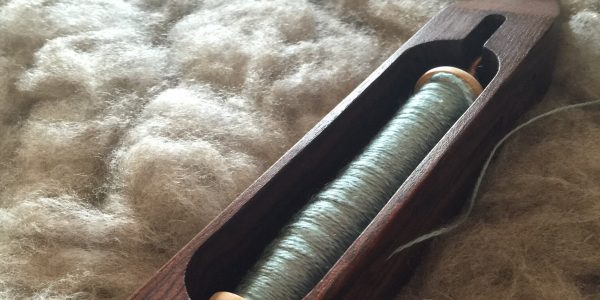I’m nearly finished weaving the Shadow Weave scarf. I was able to knock out almost 3 feet of scarf today, and now I’m down to the last 4-6 inches. There’s still some day left, so I may yet be able to finish that and take it off the loom. We will see.
In any case, I thought I would share a photo of the back side of the loom to show just how little remains of the warp.

I also reached the end of my first two bobbins of yarn, so I had to join in the new bobbins of thread. I was quite impressed that I was able to make it over 3/4 of the way through the scarf on the first two bobbins of yarn. Those little mini-cones of silk yarn at Halcyon will go a long way!
Anyway, when I join yarns in my weaving, I will weave the end tail of the first weft yarn across and make sure that it has several good, strong warp threads crossing it. Then I will pull the end of the tail out so that about an inch or so hangs out the front of the fabric, and then I beat the weft. Next, I take the new weft and throw it in the same pick, making sure that I leave another tail hanging from the front of the yarn. The new yarn should also overlap the old yarn by about an inch and should have about an inch of tail hanging out of the front of the fabric. Here’s a photo of what it looks like after I have joined the weft yarns. You can see that both bobbins finished at about the same time.

If you look closely, you can see where the weft threads overlap in the weaving, but mostly the join practically disappears in the weaving, even at this stage.
When I finish the weaving and take the scarf off to do the wet finish, the join will disappear almost entirely. I’ll trim the threads hanging out the front and the final product will make it almost impossible to find this spot. This is one of those tidbits that I think was one of the better tricks I learned from my weaving teacher. There are other ways to do the join, but I still think this is perhaps the easiest, especially with non-felting fibers like plant fibers and silk.
